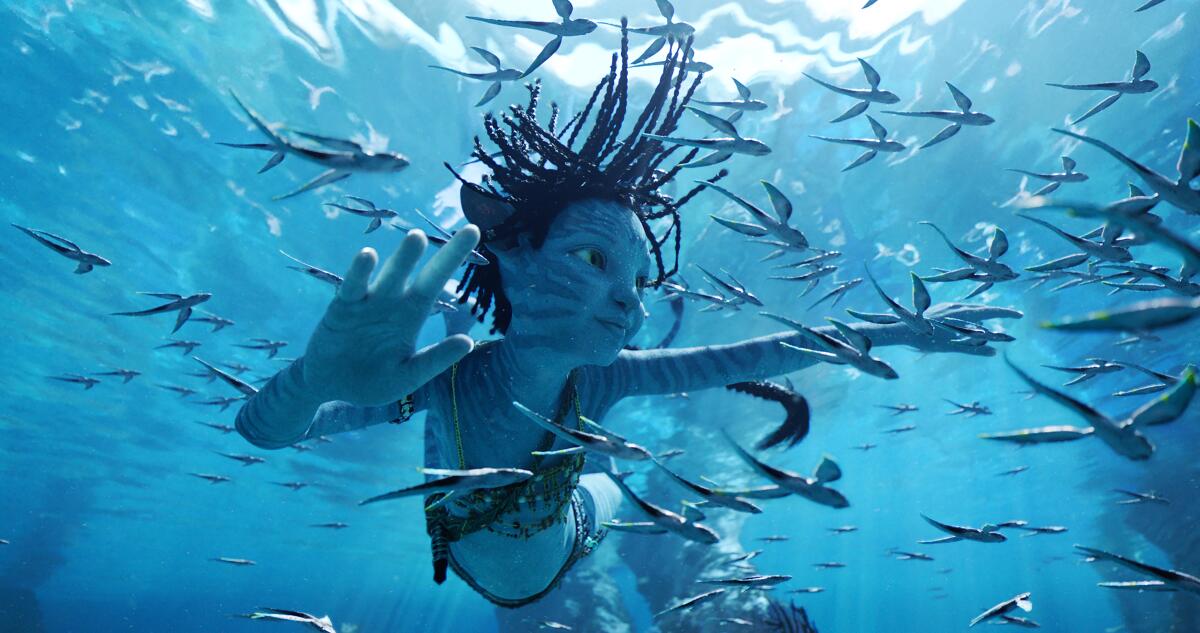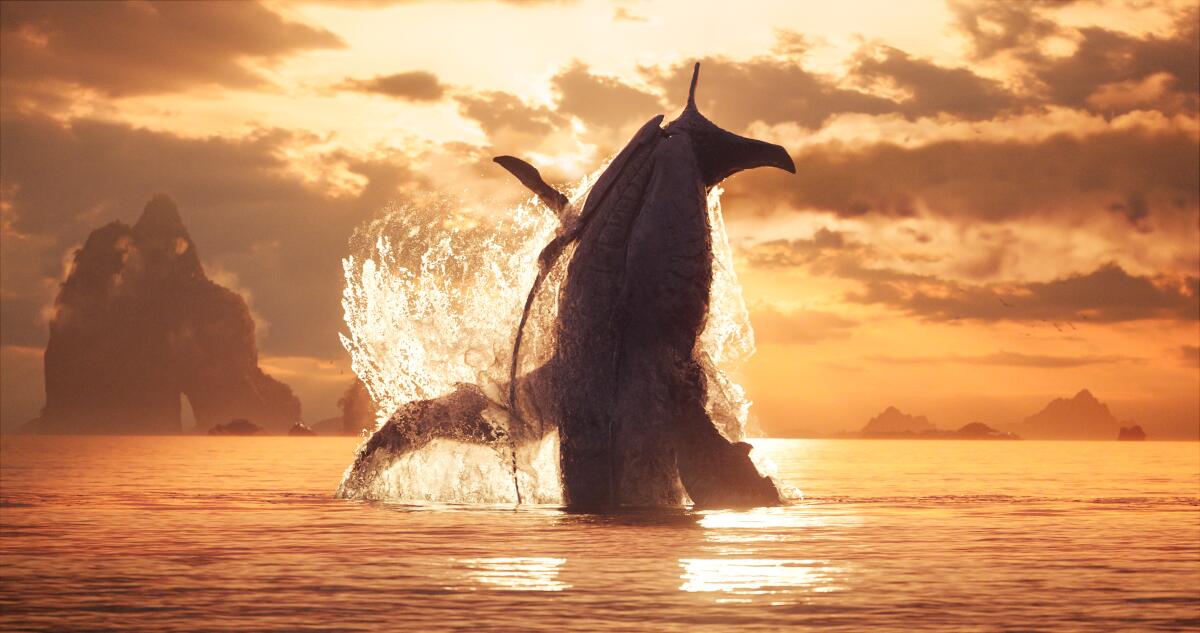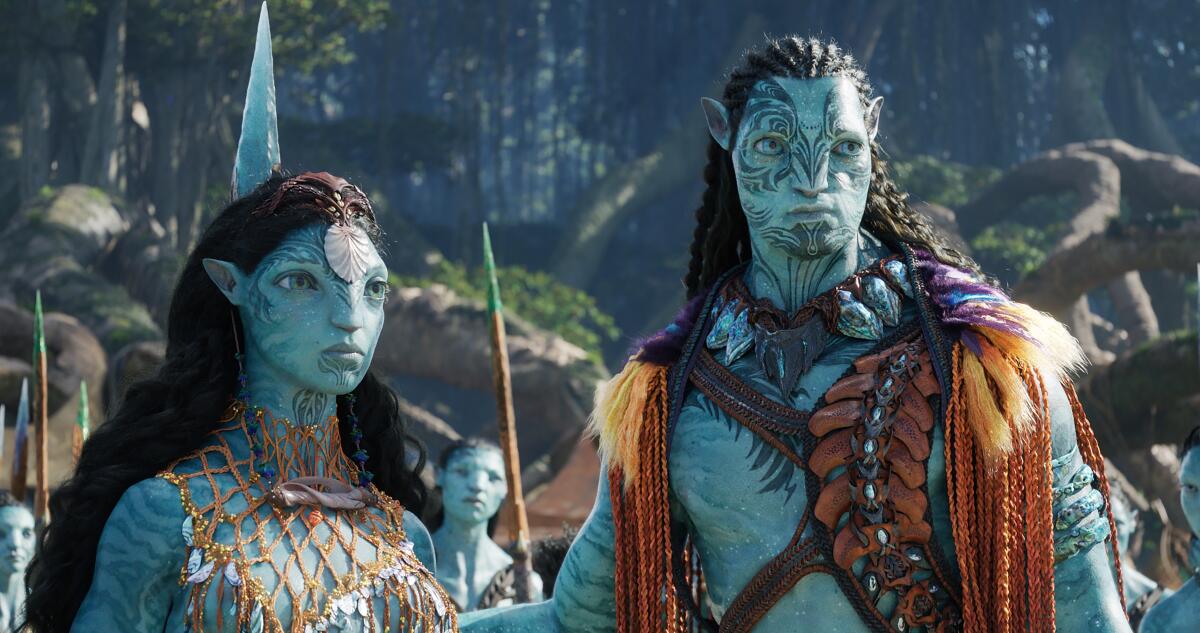Did the box office opening for ‘Avatar: The Way of Water’ live up to expectations?

It’s a Hollywood axiom right up there with “Nobody knows anything”: Never underestimate James Cameron.
Thirteen years after Cameron’s 2009 sci-fi juggernaut “Avatar” smashed global box office records, many wondered whether the filmmaker could repeat history with the sequel, “Avatar: The Way of Water.” Would Cameron once again overcome the chorus of naysayers, as he did 25 years ago with another water-borne blockbuster, “Titanic”? Or this time would he end up all wet?
In its opening this weekend, “Avatar: The Way of Water” easily dominated the box office, taking in $134 million at North American theaters and an additional $301 million internationally.
But while the debut was certainly impressive enough to quiet doubters, at least for the moment, it still fell below pre-release projections that ran between $150 and $175 million domestically, raising questions over whether Cameron’s costly enterprise will ultimately achieve long-term profitability.
Leading up to the film’s release, Cameron himself suggested that “The Way of Water” — which cost at least $350 million to produce before marketing — would ultimately need to gross in the neighborhood of $2 billion to be considered a success, cracking the Top 5 highest-grossing films of all time. (Cameron already holds two of the all-time Top 3 films globally, not adjusting for inflation: The first “Avatar” comes in at No. 1 with $2.9 billion, including re-releases, while “Titanic” is third with $2.2 billion.)
By that measure, even as the “Avatar” sequel nearly doubled the $77-million domestic opening haul of the first film, “The Way of Water” still has a long way to go, and the coming weeks and months will tell the tale.

Walt Disney Co. — which has already scheduled three more “Avatar” sequels through 2028 — is banking on the film not only to leg out through the holidays but to help power ancillary revenues through merchandise and its theme parks for years to come.
“James Cameron’s movies have a long tail,” says Tony Chambers, Disney’s executive vice president of theatrical distribution. “So this isn’t about Day 1. This isn’t about opening weekend. This is about the entire run of the movie. We know we’ve got a movie that both critics and audiences love, we’ve got the screens and there’s nothing in terms of competition for a long while. We’re in very good shape and we’ll know a lot more come Jan. 2 after the holidays.”
While reviews have been slightly mixed on “The Way of Water,” which holds a 77% rating on Rotten Tomatoes, audiences gave the film an A CinemaScore, portending strong word of mouth in the days ahead. With school out and many adults off work over the holidays, the film is already drawing strong pre-sales for mid-week showings.
With no major tentpole releases on the horizon until Disney’s own “Ant-Man and the Wasp: Quantumania” hits theaters in mid-February, Imax Corp. Chief Executive Richard Gelfond is confident that “The Way of Water” will continue to play strongly well into next year.
“There’s no competition, or very little competition, through January, and the pre-sales go pretty far out,” Gelfond says. “So I think this is a tortoise, not a hare.”

If there’s any disappointment in the opening for “The Way of Water,” it can be largely chalked up to deliriously high expectations heading into its release, says Paul Dergarabedian, senior media analyst at ComScore Inc.
“People who saw early screenings of the film came out of the theater with such a rush, I think that enthusiasm translated into these sort of overblown expectations,” says Dergarabedian. “I’m seeing people call this opening a disappointment, but I think that’s more on everyone getting so collectively excited for the film. That speaks volumes as to what an impactful filmmaker James Cameron is and what the ‘Avatar’ brand means to audiences.”
How free divers, tech experts and dauntless actors helped James Cameron redefine underwater photography with ‘Avatar: The Way of Water.’
Complicating the picture, today’s global cinematic marketplace is in a very different place than it was in 2009.
While the domestic box office continues to recover, albeit unevenly, from the COVID-19 pandemic, the critically important Chinese market — which delivered more than $261 million in grosses for the first film — could be negatively impacted as the country begins to ease its zero-COVID policy and infections rise. Meanwhile, Russia, where the first “Avatar” made $116 million, will not be showing the sequel at all — at least not in non-pirated versions.
At a time when moviegoers are finding ever fewer reasons to leave the comfort of their living room couch, the “Avatar” sequel delivered particularly strong results in Imax and premium format screens. Nearly 57% of moviegoers saw “The Way of Water” in 3-D — a massive result for a format that has seen interest largely dwindle since the heady days of the first film.
Throw in the fact that “The Way of Water” clocks in at a bladder-challenging — and potentially box office-dampening — 3 hours and 12 minutes and there could even be more reason to see the upside in the “Way of Water” opening.
Indeed, with the domestic box office still cumulatively running some 34% behind prepandemic numbers, exhibitors and even rival studio executives have to be hoping that Cameron’s aquatic spectacle will prove to be the tide that lifts all boats.
“ ‘Avatar’ is unique among movies where the presentation of it is as important to the viewer as the story line,” says Dergarabedian. “The mind-blowing visuals are predicated on having the biggest and best possible presentation both in terms of sound and vision. And that is great for movie theaters. Because you can’t get that at home.”
Times staff writer Ryan Faughnder contributed to this report
More to Read
Only good movies
Get the Indie Focus newsletter, Mark Olsen's weekly guide to the world of cinema.
You may occasionally receive promotional content from the Los Angeles Times.











